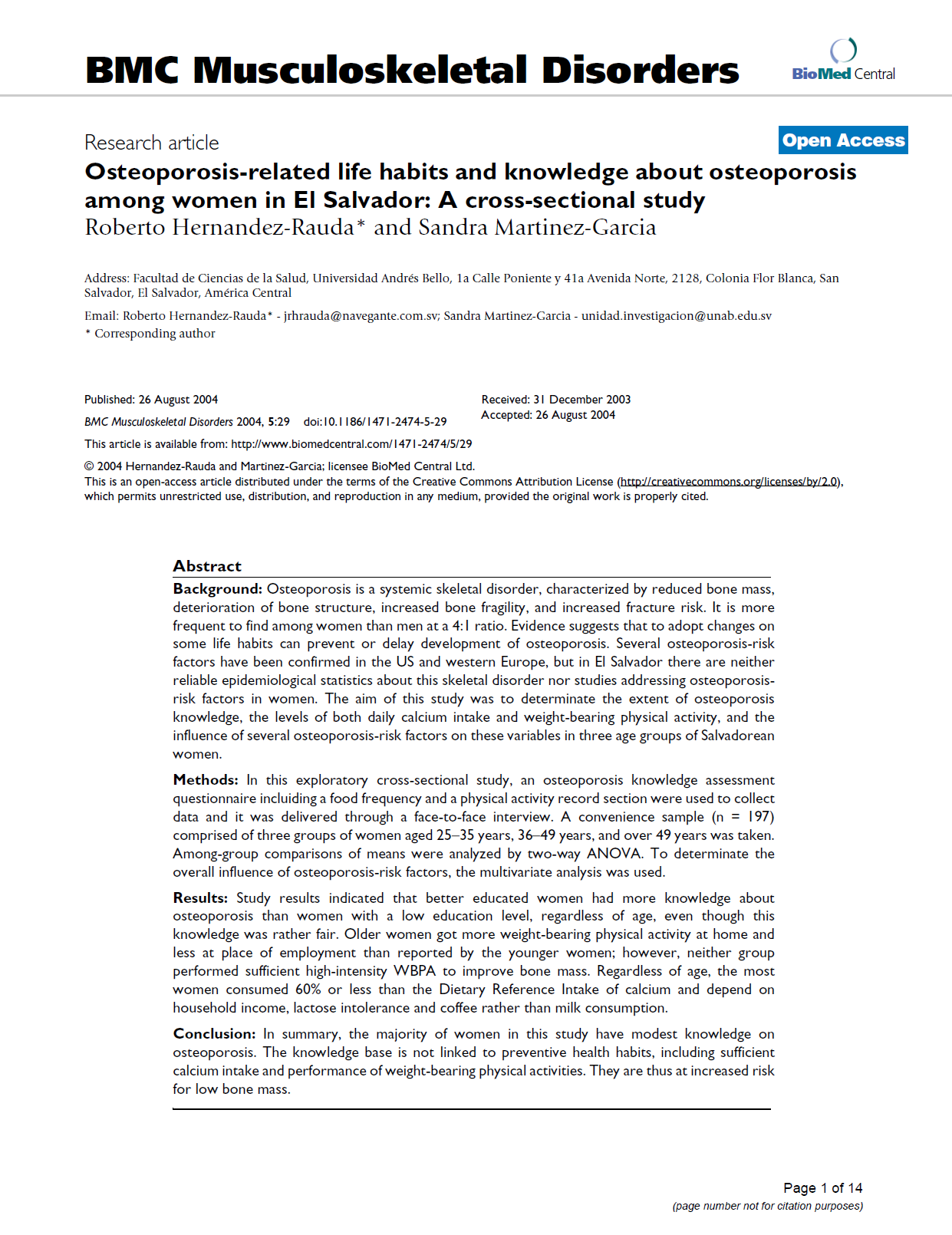
Osteoporosis-related life habits and knowledge about osteoporosis among women in El Salvador: A cross-sectional study
Autor: Roberto Hernández-Rauda, Sandra Martínez-García Categoría: Artículos científicos con DOI, Ciencias de la Salud Editorial: BioMed Central Ltd. Fecha: 2004 ISBN: doi:10.1186/1471-2474-5-29 Pags.: 14 País: Reino Unido Idioma: Inglés Tamaño: 1.31 MBBackground: Osteoporosis is a systemic skeletal disorder, characterized by reduced bone mass,
deterioration of bone structure, increased bone fragility, and increased fracture risk. It is more
frequent to find among women than men at a 4:1 ratio. Evidence suggests that to adopt changes on
some life habits can prevent or delay development of osteoporosis. Several osteoporosis-risk
factors have been confirmed in the US and western Europe, but in El Salvador there are neither
reliable epidemiological statistics about this skeletal disorder nor studies addressing osteoporosisrisk
factors in women. The aim of this study was to determinate the extent of osteoporosis
knowledge, the levels of both daily calcium intake and weight-bearing physical activity, and the
influence of several osteoporosis-risk factors on these variables in three age groups of Salvadorean
women.
Methods: In this exploratory cross-sectional study, an osteoporosis knowledge assessment
questionnaire incluiding a food frequency and a physical activity record section were used to collect
data and it was delivered through a face-to-face interview. A convenience sample (n = 197)
comprised of three groups of women aged 25–35 years, 36–49 years, and over 49 years was taken.
Among-group comparisons of means were analyzed by two-way ANOVA. To determinate the
overall influence of osteoporosis-risk factors, the multivariate analysis was used.
Results: Study results indicated that better educated women had more knowledge about
osteoporosis than women with a low education level, regardless of age, even though this
knowledge was rather fair. Older women got more weight-bearing physical activity at home and
less at place of employment than reported by the younger women; however, neither group
performed sufficient high-intensity WBPA to improve bone mass. Regardless of age, the most
women consumed 60% or less than the Dietary Reference Intake of calcium and depend on
household income, lactose intolerance and coffee rather than milk consumption.
Conclusion: In summary, the majority of women in this study have modest knowledge on
osteoporosis. The knowledge base is not linked to preventive health habits, including sufficient
calcium intake and performance of weight-bearing physical activities. They are thus at increased risk
for low bone mass.
Volver
